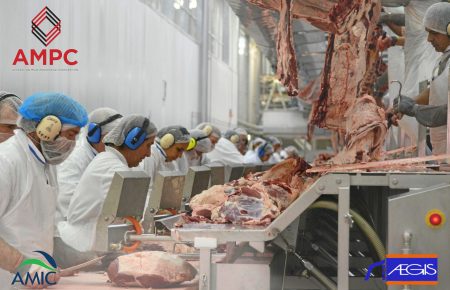By Simon Booth
I’m a bit of a geek. I was a psychologist in a former life so I did a lot of stats at university — I love my stats. Researching for this topic, the stand out thing I came across was data showing that our return-to-work stats have not improved in 15 years[1]. More recent data from Safework Australia[2],[3], outlined below, shows that nationally we are actually getting worse at return to work.
As much as the regulators, insurers and plethora of consultants in the market talk about initiatives to address employers rising Workers’ Compensation premiums, the data suggests that there has either been little change to how we address claims management and return to work, or the changes made have not just been ineffective, they have been detrimental.
Historically companies achieved improvements in their workers’ compensation premiums by addressing their workplace safety (refer Graph 1 below4). By reducing the frequency of injuries they achieved a reduction in both impacting claims costs and the resulting premium. But if we look at this data we can see that though we need to ensure that our workplaces are safe to avoid as many injuries as possible, the historic improvements in this area are no longer obtainable. This is why I see companies investing heavily in the latest in Workplace Safety fads and asking why they have not seen that investment returned in reductions in their Workers’ Compensation Premiums. In fact, in many such situations, employers continue to see their premiums rise.
A study by OHSIntros[4] identified that “safety has entered a phase where many obvious risks are now managed in workplace and only incremental reduction is possible with current strategies and workplace risk profiles.”
Despite this data organisations continue to pump money down the OH&S funnel, with little or no focus on initiatives for return to work, and expect things to change. Now I am not saying that workplace safety is not important and I truly believe that employers should do everything practicable to keep their employees safe. What I am saying, is there comes a point where companies need to acknowledge that they cannot make the historic gains in this area and they must look elsewhere for opportunities to impact their premiums.
The biggest driver of claims and premium costs is lost time, which is directly correlated to the approach to claims management and return to work, and the data suggests that as a nation we are not changing our approach in this area, we are not changing the policies that govern our actions, in short, we are not trying to innovate.
If anything, when I look at what is taking place across the country, we are becoming more structured and regulated in our approach to the management of Workers’ Compensation claims. Given that everyone is different and has different life motivators, how can we expect a structured one size fits all approach to achieve outcomes.
So even though the employers that we work with are all focused on workplace safety, many continued to see their Workers’ Compensation premiums rise due to a failure to address the human element that drives claims.
Workers’ Compensation is complicated no matter how you approach it. It’s expensive and can be difficult to manage because we are dealing with people, and people are hard to manage.
In our experience most stakeholders in the Workers’ Compensation process fail to identify the non-injury related motivators that may impact on the outcome of a claim. To steal a concept from my days as a Psychologist, they fail to identify the function of the workers behaviour.
Our experience in Workers’ Compensation has identified that the nature and type of injury is rarely the determining factor in achieving a successful return to work.
We have seen a worker almost die from a serious fall and return to work after a significant rehabilitation process and we have seen workers remain off work for several years with relatively minor injuries.
With this in mind, failing to look past the injury to identify alternate barriers to motivation and return to work will adversely impact on return to work outcomes. The aim is to ensure that you understand any and all drivers that may impact on a successful return to work and develop strategies to address the specific barriers.
Our approach to reviewing claims is an innovative approach based on identifying and addressing the function of the behaviours that injured workers present as barriers in relation to returning to work.
From an applied behaviour perspective there are four functions of behaviour. For the purposes of return to work we can eliminate sensory stimulation which leaves us with:
- Avoidance – The worker‘s behaviour is designed to get them out of doing something, eg:
a. Working
b. Dealing with workplace conflict
c. Being performance managed - Tangibles – The worker’s behaviour is designed to get them something, eg:
a. Weekly benefits
b. Impairment Benefit and/or Common Law settlement
c. Pain Medication - Attention – The Worker’s behaviour is designed to get them attention from others, eg:
a. Loved ones
b. Doctors
c. Management
d. Peers
To identify the function of the behaviours driving claims, we need to review a range of areas relating to the injured worker, including:
- Absenteeism/Presenteeism
- Family Situation
- Financial Situation
- Job Efficiency/Job Shrinkage
- Workplace Behaviour/Conflict
- Length of employment
- Age
- Nature of injury
- Evidence based injury recovery times
- Nature of pre-injury duties
- Available suitable duties
Obtaining this information enables the development of bespoke strategies applicable to the individual circumstances and motivations of each injured worker.
[1] Collie, A. (2013). What’s behind our failure to return more injured people to work? The Conversation. Retrieved from: https://theconversation.com/whats-behind-our-failure-to-return-more-injured-people-to-work-16396
[2] Safework Australia (2018). Australian workers’ compensation statistics 2016-2017. Retrieved from:
https://www.safeworkaustralia.gov.au/doc/australian-workers-compensation-statistics-2016-17
[3] Safework Australia (2018). Australian workers’ compensation statistics 2015-2016. Retrieved from:
https://www.safeworkaustralia.gov.au/doc/australian-workers-compensation-statistics-2015-16
[4] OHSIntros (2015). 30 years of OHS in Victoria, 1985-2015. Retrieved from:
http://www.ohsrep.org.au/__data/assets/pdf_file/0018/171126/30th-anniversary-of-Victorian-OHS-system-2015.pdf
Disclaimer: This article provides general advice and should not be considered legal advice or an insurance consultation. You should seek appropriate counsel for your own situation. In addition, this post is directed at people in Australia. If you are outside Australia, please be aware that the circumstances in your own country may be different.
























































